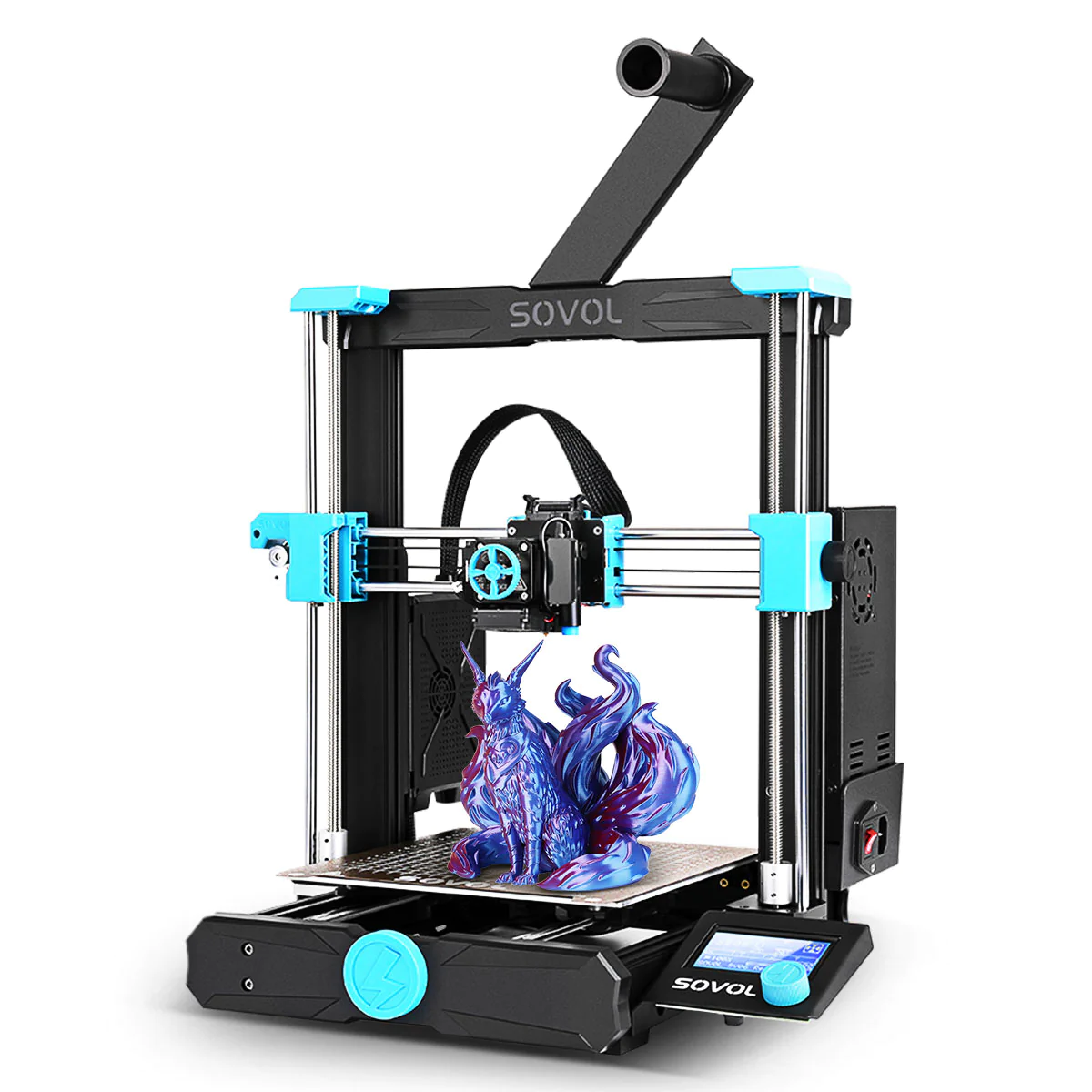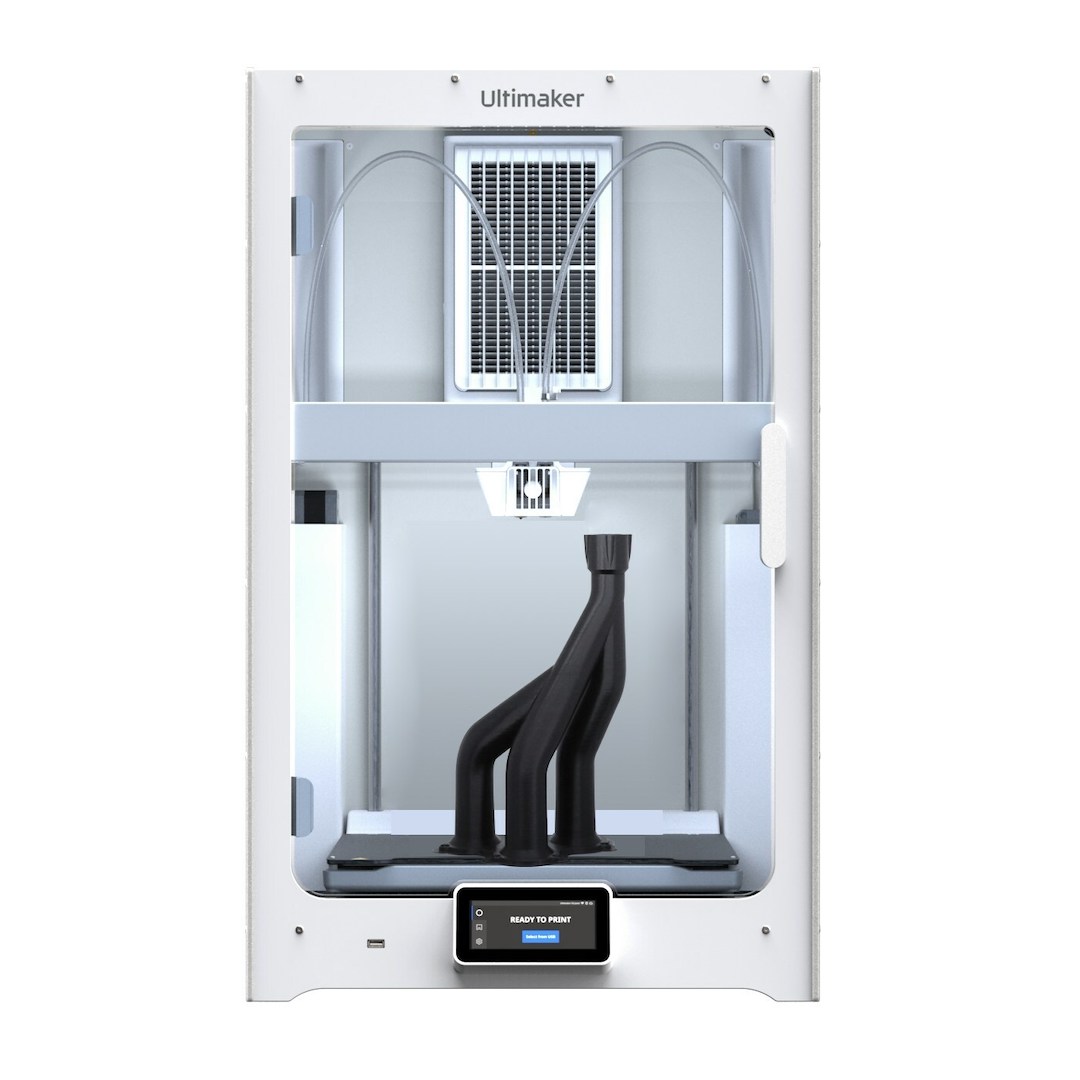Compare SV06 vs S7
Comparison between the best 3D printers
Choose the best 3D printer at the best price. The cheapest 3D printers are here.
Buy a 3D printer here with 3D Fila.
 |
 |
|
| Model | SV06 |
S7 |
| Printing Material | Filament | Filament |
| Buy Filament for Sovol SV06 | Buy Filament forUltimaker S7 | |
| Estimated price | $259,00 | $8300,00 |
| Manufacturer | Sovol | Ultimaker |
| Release Year | 2022 | 2022 |
| Print Volume [mm] | 220x220x250 | 240x330x300 |
| Printer Size [mm] | 497x388x610 | 585x495x800 |
| Weight [kg] | 9 | 29 |
| Power Loss Recovery | YES | YES |
| Enclosed printer | NO | YES |
| Bed Leveling | Automatic | Automatic |
| Filament End Sensor | NO | YES |
| Bed type | Heated | Heated |
| Power supply system | Direct Drive | Bowden |
| Standard nozzle | 0,4 | 0,4 |
| Maximum Nozzle Temperature [°C] | 300 | 280 |
| Maximum Bed Temperature [°C] | 100 | 120 |
| Maximum printing speed [mm/s] | 80 | 180 |
| Filament holder | NO | YES |
| Camera for supervision | NO | NO |
| Recommended filaments | PLA, PETG, Tritan, Flex, ABS | PLA, ABS, PETG, PC, Nylon, Tritan, PP |
| Recommended slicers | Cura, Simplify, Slic3r, IdeaMaker | Cura |
| Maximum Resolution [mm] | 0,1 | 0,1 |
| Processor | ||
| Display | Mono | Display touchscreen 4,7'' |
| Power Supply | 500 W | |
| Connectivity | SD / USB | USB / Wi-Fi |
| Operating systems | Windows, Mac, Linux | Windows, Mac, Linux |
| Date of registration in the system | 2023-03-02 | 2023-01-28 |
| Release date | 2022 | 2022 |
| Extra features | The Sovol SV06 printer stands out for having a direct-drive extruder, providing better performance when printing a variety of materials. It has linear rods for greater precision and smoothness in movements, as well as an automatic bed leveling system, eliminating manual adjustments. Its all-metal hotend supports a wide range of materials. The SV06 also features sensorless homing and Z-axis self-alignment, increasing reliability and ease of use. Compatible with Klipper software, it offers the possibility of upgrades to increase printing speed. | The UltiMaker S7 printer features a series of technological innovations to enhance 3D printing. It incorporates a flexible, magnetic build plate with PEI coating, promoting better adhesion and easier part removal. Its new inductive sensor significantly improves bed leveling, ensuring perpendicular and accurate prints. In addition, the S7 has a higher quality camera for remote monitoring, an integrated air filter, and uses a unique glass door to maintain a constant temperature in the print chamber. The machine is also compatible with the expansion kit for metal printing. |
| Support for multiple colors and materials (AMS and CFS) | NO | NO |
Notes * |
||
| Cost-benefit | 6 / 10 | 1 / 10 |
| Hardware | 0.6 / 10 | 3.6 / 10 |
| Tela | . | . |
| Print volume | 3 / 10 | 4 / 10 |
| Performance | 0 / 10 | 1 / 10 |
Conclusion |
| In comparing the Sovol SV06 and the Ultimaker S7, it is clear that each printer caters to different segments of the 3D printing market, marked by significant differences in price, features, and intended use. The Sovol SV06 stands out as an affordably priced, entry-level option offering decent print capabilities, including a direct-drive extruder that benefits users wanting to experiment with a variety of materials. Its automatic bed leveling and sensorless homing add convenience, making it suitable for hobbyists or those new to 3D printing. In contrast, the Ultimaker S7 represents a high-end investment designed for professionals or businesses requiring advanced features and reliability. With its larger print volume, superior bed leveling technology, and enhanced material compatibility, the S7 is targeted at users seeking precision and high-quality output. Its additional features, such as an integrated air filter and temperature-controlled print chamber, further justify its premium pricing. Ultimately, the choice between the two depends on the user's specific needs and budget. For budget-conscious individuals or hobbyists, the Sovol SV06 offers a good balance of performance and affordability. However, for professional applications where quality, reliability, and advanced capabilities are paramount, the Ultimaker S7 is the recommended option despite its higher cost. Therefore, the decision boils down to evaluating the importance of features and performance against the price point for the intended use case. |

